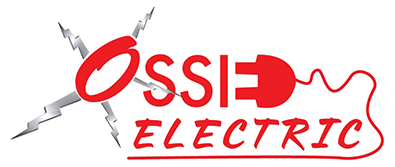Cost Saving Light Fixtures
If you are ready to enjoy lower electric bills, reduced heat emitted from lights, more flexible design options, and longer lasting light bulbs, call us at Ossie Electric to install new LED (light emitting diode) or fluorescent bulbs and fixtures.
Unless you are in a facility that is bathed in sunlight and operates only during the daytime, at some point you have to deploy a lighting system. Many operators do little more than replace bulbs or ballasts in the system they’ve inherited. Such an oversight could become expensive as the useful life of fixtures and bulbs vary widely in functionality and costs.
First developed in the 1960’s, there are over 40 million gas discharge lamp variants or metal halide systems in the United States. This electric lamp produces light by firing an electric arc through a gaseous mixture of vaporized mercury and metal (or other material such as sodium or xenon). It has a high intensity light discharge but suffers many disadvantages compared to other options.
Useful life of 6,000 - 15,000 hours for halides pales in comparison to fluorescent (30,000) or LED (100,000). Light output dims with usage as halides lose 60% of their luminosity before failing. Many models have a cool-down period in excess of 10 minutes during which time they do not re-fire. To avoid this downtime, some operators elect to keep them on even when not needed. Similar to incandescent bulbs, much of the energy produced is wasted as heat leading to 50%-100% more wattage needed to produce comparable light as LED or fluorescent.
To determine the annual energy savings we gather the following:
- Count the number of fixtures to be replaced.
- Note the wattage used by each fixture.
- Multiply A * B to yield total watts and divide this by 1,000 to express kilowatts.
- Project the annual hours to be used (or tally the previous year usage).
- Determine the rate charged for electricity.
- Multiply kilowatts by hours by rate (C * D * E) to calculate annual energy cost.
Owners will want to know the payback period - that is the time needed for operating savings of switching away from halides to equal initial capital outlay to install fluorescents or LEDs.
We confer with owners to determine if the same amount of lighting is to be produced or if changing needs require increased or decreased output. This discussion informs whether the number of fixtures will remain constant or vary. The capital outlay includes the cost of a permit, the purchase price of the new fixtures, and the labor cost related to install them while safely discarding the old fixtures.
Here is an example of a distribution center suffering from high electric bills and operating inefficiencies related to the 123 high-pressure-sodium light fixtures installed drawing 460 watts per fixture which were replaced by 166 fluorescent 6LT5 F54 bulbs drawing 234 watts.
Previous energy costs:
- 123 fixtures * 460 watts per fixture = 56,580 watts or 56.58 kilowatts
With electric rates of $0.16 per kilowatt and 3,500 hours operated per year, the energy bill was:
- 56.58 kilowatts/hour * $0.16 rate/kilowatts * 3,500 hours = $31,685 electric cost old fixtures
New projected electric cost:
- 166 fixtures * 234 watts * 3,500 hours * $0.16 rate / 1,000 = $21,753
- Annual savings were $31,685 - $21,753 or $9,932
Despite more fixture, energy costs were lower. The initial outlay was $36,180 and dividing that by the annual savings yields 3.64 years or between 43 and 44 months to payback.
Other benefits such as quicker cool down and faster refire (less warm-up time), reduced cooling needs (stemming from lower bulb radiated heat), and fewer bulb replacements (due to longer bulb lives) offer additional savings which hastens the payback period. Such functionality could have been further leveraged with motion sensors or timers to turn off lights not in use.
With an LED installation, operating savings would have been greater still. LED typically require lower wattage and have more pointed light directionality. LED are smaller, lighter, and offer greater design flexibility. The major drawback is the acquisition cost is likely higher, but the price gap has greatly diminished in recent years.
The annual electricity costs of an LED bulb could be as little as one-tenth of a standard incandescent or metal halide while its useful life could be 10 times as long. This explains why LED current market share is expected to increase six folds to over 50% by 2022. It is hard to dismiss these benefits along with superior cold weather performance and reduced environmental impact from disposal.
Call Ossie Electric today to learn more about LED and other cost efficient lighting options.
